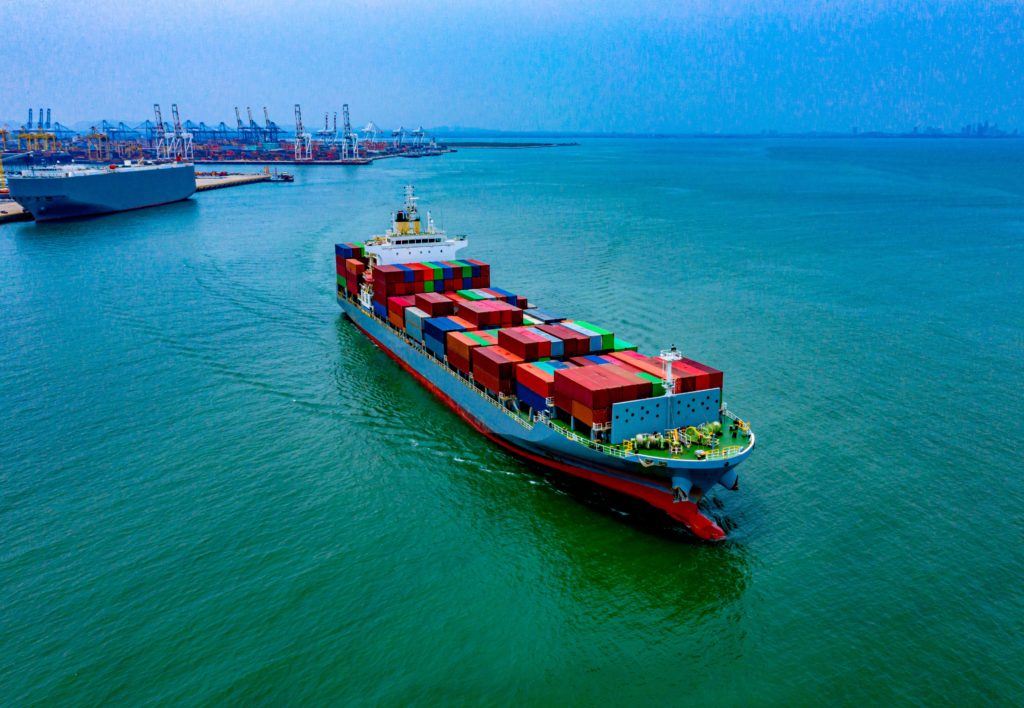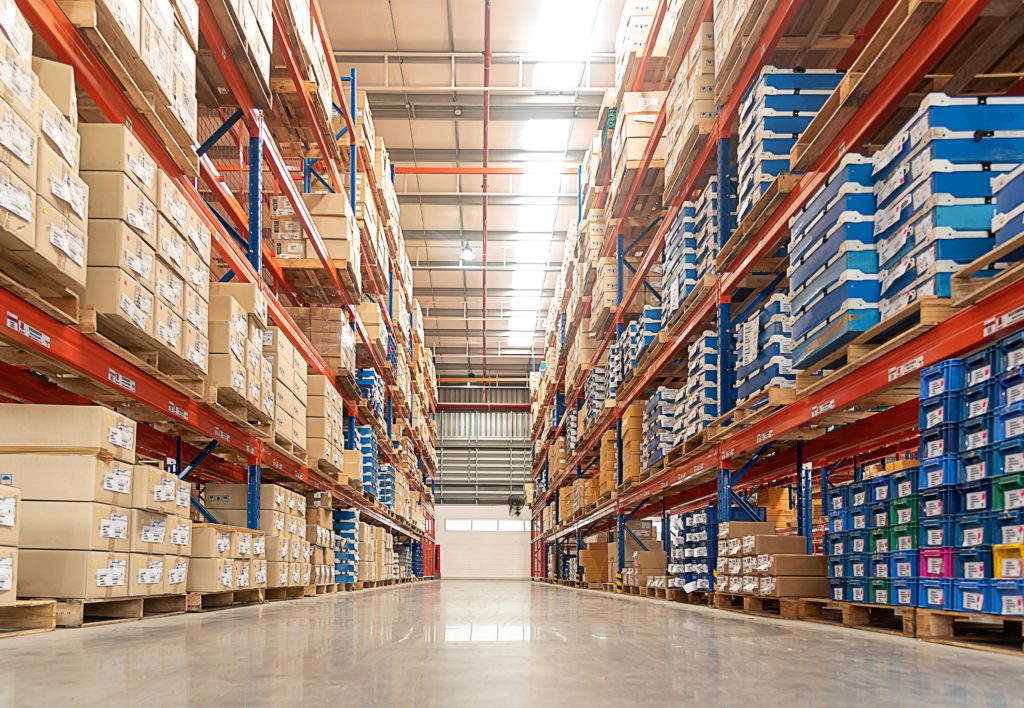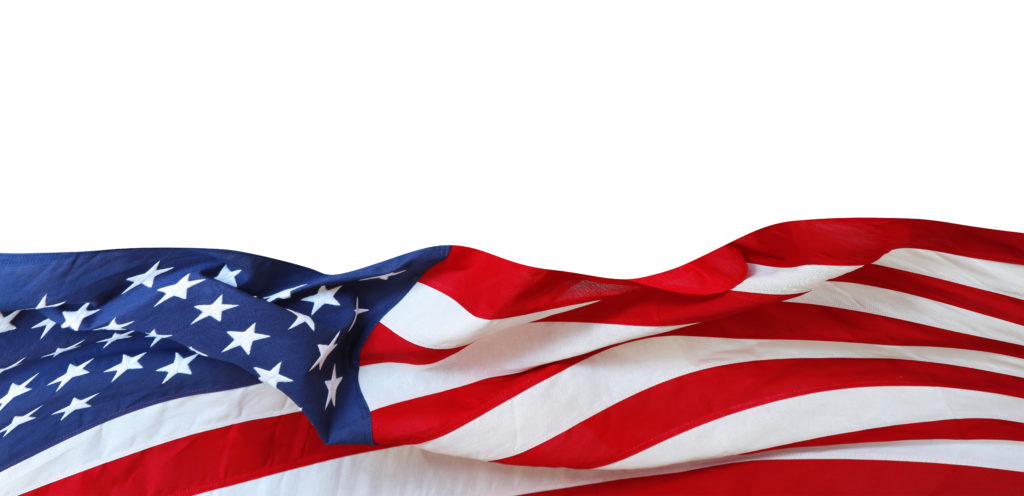Customs Clearance of FDA-Regulated Products
Customs Clearance of FDA Regulated Products
Importing FDA-Regulated Products
The first step in any importation process begins with U.S. Customs and Border Protection (CBP). You must comply with CBP rules, requirements, and processes. All products offered for entry into the United States, including items for personal use, must be declared to CBP.
When submitting an entry notification, a filer will determine the appropriate Harmonized Tariff Schedule (tariff) code for each product being offered for importation.
CBP uses the tariff code, in part, to determine if other government agencies also need to make an admissibility determination. A tariff code may cover a wide range of products and may include both products that are subject to FDA jurisdiction and products that are not subject to FDA jurisdiction.
When this is the case, filers are usually given the option of “disclaiming” FDA jurisdiction. This is accomplished by disclaiming the “line” in the entry that applies to those products. (Each distinct category of product in an entry will have its own “line” in the entry. For example, if a shipment of a vaccine consisted of both multi-dose vials and pre-filled, single dose syringes, the vials would be one line and the syringes another line.
CBP refers all FDA-regulated products to the FDA for review. FDA receives electronic information about most FDA related entries from CBP. FDA currently receives this information through its Operational and Administrative System for Import Support (OASIS).
In-Depth Coverage: Country of Origin
- Country of Origin of Imported Merchandise
- Customs Ruling: Country of Origin
- Country of Origin: Food Products
- Country of Origin: Chemical and Pharmaceutical Products
- Country of Origin & Country of Manufacture: CBP vs. FDA
- Country of Origin: Substantial Transformation or Country of Assembly Test
- Country of Origin and Free Trade Agreement
- Country of Origin and Section 301
FDA Entry Review Process – PREDICT & OASIS
The FDA determines whether products are admissible into U.S. commerce and may refuse entry to any that violate or appear to violate any provisions of the Federal Food, Drug, and Cosmetic Act (FD&C Act).
FDA electronically screens every one of the millions of shipments of food offered for import into the United States every year. Predictive Risk-based Evaluation for Dynamic Import Compliance Targeting (PREDICT) is FDA’s automated import screening tool. FDA uses PREDICT to identify higher-risk shipments of food offered for import. The primary goal is to prevent the entry of adulterated, misbranded, or otherwise violative goods while expediting the entry of compliant goods.
PREDICT will improve FDA enforcement targeting by scoring each entry line, taking into account multiple factors about each entry line – everything from compliance history of the facility that produced the imported product to the level of risk associated with that product. With that current intelligence, PREDICT assigns a risk score1 to every imported food item, identifying higher-risk items for potential examination and expediting the clearance of for lower risk line items (more compliant). PREDICT shifts the focus of FDA reviews from “entries” to “line items”.
PREDICT Improve the targeting of entry lines by –
- Scoring each entry line on the basis of risk factors and surveillance requirements
- Increase the number of automated, real-time, risk-based “May Proceed” decisions, thereby giving entry reviewers more time to evaluate higher-risk lines
- For those lines not given an automated “May Proceed,” providing reviewers with the line scores and the reasons for those scores
After an import entry filer submits an import entry declaration in ACE and all the required information is sent to FDA, FDA processes the entry through OASIS and PREDICT and reviews the entry. Every electronic entry is automatically screened by the system, and may also be reviewed manually by an FDA entry reviewer. Once FDA makes an initial or final admissibility decision on the entry, the disposition message is sent back through OASIS to CBP via ACE back to the entry filer. This message indicates FDA’s decision on whether: (a) the product may proceed into U.S. commerce, (b) additional information is required, (c) an examination is required, or (d) the shipment appears to be subject to refusal of admission.
In-Depth Coverage: Cosmetics Import Requirements
What information is submitted to CBP and FDA about an FDA-regulated product?
The entry information submitted to CBP and then to FDA includes:
- the identification of the product by the tariff code;
- the entry type;
- the entry number;
- the arrival date;
- the port of entry;
- the port of unlading;
- the carrier code;
- the vessel name and voyage, flight or trip number;
- the importer and ultimate consignee;
- the quantity;
- the value;
- the country of origin;
- the bill of lading or airway bill number;
- the manufacturer;
- the importer of record; and
- the ultimate consignee.
The tariff codes are flagged to indicate which products will require FDA review. The additional information that is currently transmitted to the FDA includes:
- the FDA manufacturer;
- the FDA shipper;
- the FDA Country of Production (country of origin);
- the complete FDA product code;
- a description of the article in common business terms;
- the quantity for each FDA line; and
- Affirmations of Compliance.
By accurately providing FDA with the information on ACE data elements, most importers may potentially be able to increase the probability of receiving ‘may proceed’ from FDA and potentially reducing the probability of having to submit additional information to FDA after the initial submission, reducing the probability of a product being held by FDA, and/or reducing the length of a detention period if it occurs.
In-Depth Coverage: Medical Device Import Requirements
Required FDA Data
If a foreign product requires FDA approval, five specific data elements, in addition to the information required by CBP, must be submitted for FDA review. Those data elements are discussed below.
Commercial Description
The commercial description is an actual description of the product. This is usually obtained from the invoice.
FDA Manufacturer
The FDA Manufacturer is the site-specific location where the product is manufactured, produced or grown. FDA needs to know the actual manufacturer of the product. U.S. Customs Service only requires the “invoicing firm,” which may or may not be the manufacturer. For example:
- ABC Co, in Hong Kong manufacturers and labels canned mushrooms under contract for XYZ Corp. in the People's Republic of China.
- XYZ Corp. invoices and ships the product to the U.S.
- RESULT: FDA considers ABC Co. to be the manufacturer; U.S. Customs Service considers it to be XYZ Corp.
Many FDA regulated products, food items (for example, Low Acid Canned Foods), medical devices, human and veterinary drugs, and biologics always require evidence they were produced in a facility that has registered, licensed and/or listed its products with FDA. For these products, the site-specific location must be submitted as the FDA Manufacturer. The name and address of a corporate headquarters, “trading company,” or other intermediate supplier is not acceptable. The only exception to this data requirement is where a valid Memorandum of Understanding (MOU) or other binding agreement between the FDA and a foreign governmental agency directs otherwise.
In-Depth Coverage: Customs Valuation
If a product (such as a raw agricultural commodity) does not require registration, listing, or licensing, and the actual site-specific FDA Manufacturer information is not available, after making a good faith effort to determine same, the filer may instead transmit the FDA Shipper in lieu of the FDA Manufacturer. Note: In this case, the FDA Country of Origin remains the country where the actual site-specific FDA Manufacturer is located; the filer may be able to determine this from the invoice “Product of – – ” statement. If after diligence the filer cannot determine the FDA Country of Origin, the Customs Country of Origin may be substituted in its place.
While it is technically permissible to transmit the shipper or consolidator under the situations described in example three above, every effort must be taken to provide the actual FDA Manufacturer. Failure to do so may result in the wrong firm being added to an FDA Import Alert and future shipments could be subject to Detention Without Physical Exam when another firm is actually responsible for the violation.
FDA Shipper
The FDA Shipper is the actual shipper of the product. This can be determined from the freight bill or bill of lading, etc. The FDA Shipper is usually the same as the CBP invoicing party.
In-Depth Coverage: Importing Medical Device
FDA Country of Production
FDA considers the country of origin to be that of the actual manufacturer. CBP considers it to be the country where the product last underwent a “substantial transformation” (resulting in an increase in value). For example:
- ABC Co. in Japan manufactures stereo systems, which contain a CD player manufactured by XYZ Corp. in Korea.
- CBP considers Japan to be the country of origin – based on ABC Co. manufacturing the stereo system.
- FDA only regulates the CD player and considers the country of origin to be Korea, where the CD player was manufactured.
FDA Product Code
The FDA Product Code is a 7 character alphanumeric code. The Code identifies the specific product and must agree with the invoice description of the product. Each FDA line of the entry papers must have an FDA Product Code. This training tutorial covers the FDA Product Code in detail.
Optional FDA Data
Optional data is not applicable to all products. But, in some cases where it is applicable, providing optional FDA data often speeds the FDA review process. Below are descriptions of the five optional data elements
In-Depth Coverage: Trade Remedies
Affirmation of Compliance Code
Affirmations of Compliance (A of C) are voluntary data elements that a customs broker or self-filer currently may use when transmitting certain information to FDA through the CBP’s electronic interface with OASIS. Each A of C provides a mechanism to indicate (or affirm) compliance with a specific FDA regulatory requirement. For example, for a licensed biological product, the A of C would be the BLN (Biologics License Number) or STN (Submission Tracking Number), while for an investigational biological drug product, it would be the IND (Investigational New Drug Application) number.
Value
Value must be submitted in U.S. dollars. The value of the FDA line cannot exceed the value of the U.S. Customs Service entry. To ensure the Customs line/entry value is not exceeded, it is permissible to decrease the FDA line value to make the required adjustment. Such line value adjustments should be recorded on the invoice. These annotations will expedite the review and comparison of the entry documents to the electronic data.
Consignee
The FDA consignee data field only needs to be transmitted when the consignee transmitted for CBP data is not a U.S. firm. The reason is that the FDA must know where the product is going.
Quantity
Quantity Data provides additional information to FDA about the product and how it is packaged. The basic format for Quantity Data is in multiple pairs of data – quantity and unit of measure, i.e., 500 cases, 12 ounces, fluid, 1000 cartons, etc. Up to 6 data pairs may be submitted. The first pairs describe the containers. The last pair must describe the amount of product in the smallest container. Here are some examples:
Product: 1000 cases of mineral water, 24/12 ounce bottles in each case
- Data pairs: 1000 CS (Case)
- 24 BO (Bottle, Non-protected, Cyl)
- 12 FOZ (Ounces, fluid)
Product: 200 cartons of 100 rolls surgical gauze, 75 square yards per roll
- Data pairs: 200 CT (Carton)
- 100 RO (Roll)
- 75 (SYD (Square Yards)
Product: 100 cartons of 24 aspirin bottles, 100 tablets, 325 mg.
- Data pairs: 100 CT (Carton)
- 24 BO (Bottles, Non-protected, Cyl)
- 100 TAB (Tablets)
In-Depth Coverage: Importing Food Products
- What is FDA Food Safety Modernization Act (FSMA)?
- Prior Notice of Imported Foods
- FDA Food Facility Registration
- Risk-Based Preventive Controls for Human Food
- Risk-Based Preventive Control for Animal Food
- Protect Food against Intentional Adulteration
- What is Foreign Supplier Verification Program (FSVP)?
- What is FSMA Produce Safety Rule?
Electronic Environment of FDA Entry Process
ACE/International Trade Data System (ACE/ITDS)
In collaboration with the U.S. Customs and Border Protection (CBP) and 46 partner government agencies, the Food and Drug Administration has been working to modernize business processes through the implementation of the Automated Commercial Environment/International Trade Data System (ACE/ITDS).
ACE/ITDS is a single access point whereby industry can electronically submit all data required by various government agencies involved in international trade. ACE replaced the Automated Commercial System in 2016.
Through ACE/ITDS, importers and brokers now have the option to uniquely identify firm information by providing the Dun & Bradstreet (D&B) Data Universal Number System (DUNS) Number, in addition to the firm name and address. To support this new feature, the FDA has worked with D&B to develop the FDA ITDS/DUNS Portal. This website provides trade, at no cost, the ability to look up; verify; update; and if necessary, request new DUNS Numbers for use on FDA ACE/ITDS transactions, via a simple web interface.
Import Trade Auxiliary Communication System (ITACS)
The FDA has deployed the Import Trade Auxiliary Communication System (ITACS) for use by the import trade community. This system was implemented in order to improve communication between the FDA and the import trade community. The presentations provide overviews of basic ITACS functionality and the new ITACS Account Management functionality and a walkthrough of how to use both.
ITACS basic functionality provides the import trade community the ability to electronically: check the status of FDA-regulated entries and lines, submit entry documentation, submit the location of goods availability for those lines targeted for examination by the FDA, and check the estimated laboratory analysis completion dates for lines which have been sampled.
Benefits to the trade include the ability to receive more detailed entry statuses than what is currently transmitted to filers via Customs’ Automated Broker Interface (ABI) reducing the need for phone calls inquiring about the status of entries and eliminating the need to email, mail or fax entry documentation and goods availability to the FDA. Additionally, ITACS mitigates the problem of lost documents.
PREDICT (Predictive Risk-based Evaluation for Dynamic Import Compliance Targeting)
PREDICT (Predictive Risk-based Evaluation for Dynamic Import Compliance Targeting) is a risk-based analytics tool FDA uses to electronically screen all regulated shipments imported or offered for import into the United States of America.
PREDICT improves import screening and targeting to prevent the entry of adulterated, misbranded, or otherwise violative goods and expedites the entry of non-violative goods. PREDICT uses automated data mining, pattern discovery, and automated queries of FDA databases to determine the potential risk of a shipment. It takes into consideration the inherent risk of a product and also information about the previous history of importers, manufacturers, and shippers.
PREDICT presents shipments for further review based on its analytical results. Shipments with lower risk ranks and no other potential risks may be processed through FDA review more quickly than higher risk lines.
FDA's new PREDICT, a risk-based screening tool for imports has been fully deployed. It has replaced the admissibility screening function of OASIS.
Operational and Administrative System for Import Support (OASIS)
The Operational and Administrative System for Import Support, known as OASIS, is an automated FDA system for processing and making admissibility determinations for shipments of foreign-origin FDA-regulated products seeking to enter domestic commerce. The ACE interface is directly linked to the FDA’s Operational and Administrative System for Import Support (OASIS) that facilitates admissibility decisions of FDA-regulated imports into the U.S.
Entry Screening Systems and Tools: Import Entry Review, OASIS, PREDICT
Two of the FDA’s electronic systems, Import Entry Review and Operational and Administrative System for Import Support (OASIS), in combination with a screening tool called Predictive Risk-Based Evaluation for Dynamic Import Compliance Targeting (PREDICT), expedite the import review process by helping FDA reviewers evaluate the declared information.
The Import Entry Review System is an FDA application used internally to view entry or line documentation, make initial admissibility decisions, and create field work assignments. The application allows FDA employees to effectively process entries in an efficient manner.
The application has the added functionality to quickly request additional specific information from the customs broker/entry filer when the information transmitted in an entry or line is insufficient to make an admissibility decision.
Customs brokers/entry filers have the ability to upload the requested documents through the Import Trade Auxiliary Communication System (ITACS), which can be viewed in the Import Entry Review System. With the additional information, the entry reviewer can update the data and rescreen the entry line with the new data, as needed. The entry reviewer can then issue a May Proceed or setup a work assignment. Updating entry information with more accurate and complete data helps PREDICT’s screening results for future shipments.
FDA-Regulated Products and Import Requirements
- What is Food Safety Modernization Act (FSMA)?
- Prior Notice of Imported Foods
- Food Facility Registration
- Risk-Based Preventive Controls for Human Food
- Risk-Based Preventive Control for Animal Food
- Standards for the Growing, Harvesting, Packing, and Holding of Produce for Human Consumption
- What is Foreign Supplier Verification Program (FSVP)?
- Protect Food against Intentional Adulteration
- FDA Regulated Product in Foreign Trade Zone (FTZ)
- Entry Review Process for FDA Regulated Products
- Country of Origin VS Country of Manufacture
- Foods Regulated by FDA or USDA: What is the Difference?
- Label and Labeling Claims for Conventional Food and Dietary Supplements
- What is USDA Country of Origin Labeling (COOL)?
- Import for Export of FDA Regulated Products
- FDA Regulated Products in Personal Baggage or Sending by Mail or Courier
- International Mail Facility (IMF) and FDA Regulation
- Importing Biological Product Regulated by CBER
- Importing Cosmetics and Voluntary Cosmetic Registration Program (VCRP)
- Importing Drugs into the U.S.
- Importing OTC Drugs into the U.S.
- Importing Veterinary Drugs into the U.S.
- Importing Tobacco Products into the U.S.
- Importing Medical Devices into the U.S
- Importing Food Products into he U.S.
- Importing Radiation-Emitting Products into the U.S.
Customs Clearance and Import Requirements
- Entry of Imported Merchandise
- What is Section 321 Entry?
- What is Automated Commercial Environment (ACE)
- What is an Automated Broker Interface (ABI)?
- Who is Ultimate Consignee?
- What is Non-Resident Importer Program?
- Country of Origin of Imported Merchandise
- What is the Country of Assembly?
- What is the FDA's Country of Manufacture?
- Marking of Country of Origin on U.S. Imports
- What is Customs Bond?
- Reconciliation Prototype and Bond Rider
- Who Needs a Customs Broker?
- What is Customs Ruling Program?
- Classification of Imported Goods
- How is imported merchandise appraised?
- What are Import Quotas?
- What are Trade Remedy Duties?
- Antidumping Duty (AD) and Countervailing Duty (CVD)
- What is Foreign Trade Zone (FTZ)?
- What is Importer Security Filing (ISF)?
- What is Temporary Importation under Bond (TIB)
- What is In-Bond Process?
Guidance on customs & logistics solution for traditional and e-commerce importers and exporters
Freight Forwarding
Looking for a freight forwarding partner? To move your cargo from its current location through customs to its final destination we will partner with you to find the best way for your business. Whatever your transportation, logistics or customs clearance needs, we will do our best to customize a solution for your needs.
Customs Clearance
The goods imported into the U.S. are required to be declared to CBP. Our customs broker will help you stay in compliance with customs laws and regulations and clear your goods quickly and efficiently with our electronic Automated Commercial Environment (ACE) and Automated Broker Interface (ABI) Single Window System
Warehousing & Distribution
Our warehouse facility offers great potential for serving as a regional hub with over 145,000 SF storage capacity close to Los Angeles Airport & Los Angeles/Long Beach Sea port. With our extensive experience in freight services, your import/export cargo will be handled quickly and effectively.
Non-resident Importer Program
If you want to sell your products in U.S. marketplaces, but you are a business owner located outside of the U.S. and do not have an entity or presence in the U.S., you need to be established as a Foreign Importer of Record before your products can be imported into the U.S. We can help you.
Section 321 Entry
Section 321 entry allows importing free of duty and tax for shipments imported by one person on one day having a fair retail value in the country of shipment not more than $800. We provide our resident and non-resident clients with dedicated ACE eManifest solutions for Section 321 entry of all modes of transportation.
E-Commerce
The Internet has made it easy to find and purchase items from almost anywhere in the world. Our e-commerce experts will help you find the right solution for your international transportation, customs clearance, and delivery to your final destination. We also provide value-added repackaging, warehousing and distribution services.
















